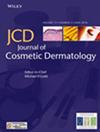Application of Antioxidant Mixture Prevents Cutaneous “Oxinflammaging” in Subjects Exposed to Particulate Matter
Abstract
Background
Premature skin aging and the growing incidence of skin conditions are closely linked to daily exposure to environmental agents. Among all air pollutants, particulate matter (PM) is regarded as one of the most aggressive in terms of skin damage, promoting degradation of extracellular matrix (ECM) components and depletion of the cutaneous antioxidant defense via initiation of oxinflammatory reactions. Moreover, PM can penetrate damaged skin, exacerbating the effect of other pollutants and worsening the symptoms of existing skin conditions. Topical application of antioxidant compounds can limit and, in certain cases, even prevent skin damage.
Objective
In the present study, a randomized clinical study was conducted to evaluate the protective effects of a topically applied antioxidant serum containing 15% ascorbic acid, 0.5% ferulic acid, and 1% tocopherol (AOX Mix) against the PM-induced skin damage.
Methods
For this purpose, the back of 15 female volunteers, between 19–40 years and with skin phototypes III and IV, was pre-treated with AOX Mix and exposed daily to PM for 4 days. Skin sample biopsies were subsequently collected and subjected to histological analysis to evaluate the key markers related to skin “oxinflammaging”.
Results
The AOX Mix demonstrated protective effects against the cutaneous degradation of ECM components, including type I and III collagens, elastin, and tropoelastin. It also mitigated markers of inflammation (COX2), oxidative stress (4-hydroxynonenal), and structural damage (involucrin, filaggrin, claudin-1, desmocollin 1).
Conclusion
Regular topical application of an antioxidant cosmeceutical formulation represents an effective strategy to counteract the detrimental effects of environmental insults, particularly with respect to inflammaging.


 求助内容:
求助内容: 应助结果提醒方式:
应助结果提醒方式:


